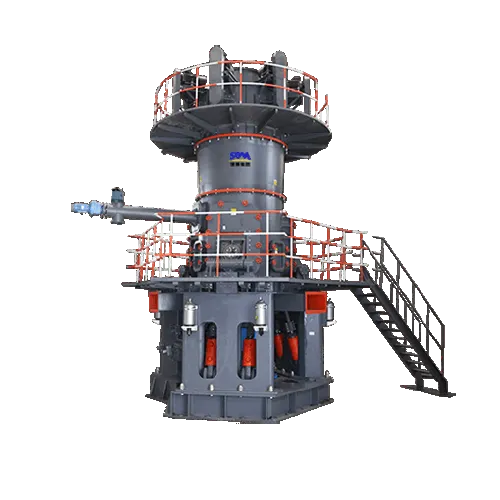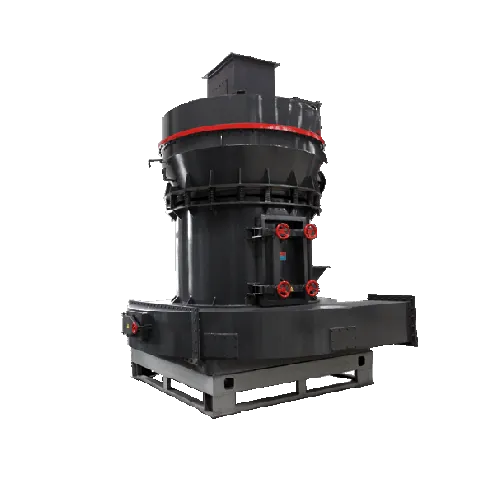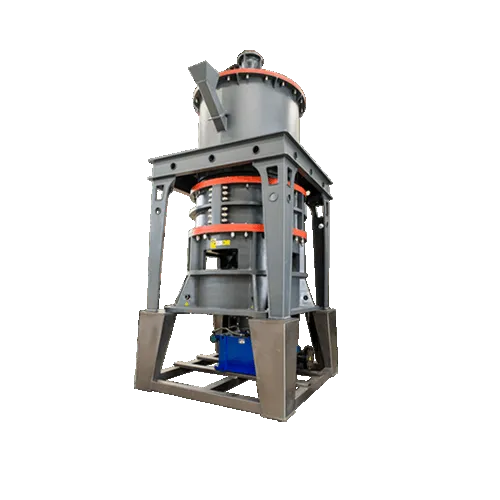Summary:There are many kinds of impurity elements in quartz, and the content of each impurity element in quartz and its effect on purification process are not the same.
Quartz sand is an important industrial mineral raw material with a wide range of uses, such as glass, casting, ceramics and refractory materials, metallurgy, construction, chemicals, plastics, rubber, abrasives and other industries. Not only that, high-end quartz sand also plays an important role in electronic information, optical fiber, photovoltaic and other industries, defense industry, aerospace and other fields. It can be said that small grains of sand support big industries.
At present, what are the types of quartz sand, do you know all the different types of quartz sand?
Quartz Sand Of Different Specifications
Common specifications of quartz sand are: 0.5-1mm, 1-2mm, 2-4mm, 4-8mm, 8-16mm, 16-32mm, 10-20 mesh, 20-40 mesh, 40-80 mesh, 80-120 mesh, 100-200 mesh, 200 mesh, 325 mesh.
The mesh number of quartz sand actually refers to the particle size or thickness of the quartz sand, generally referring to the mesh within the area of 1 inch X 1 inch, and the number of holes that can pass through the mesh is defined as the mesh number. The larger the mesh number of the quartz sand, the finer the particle size of the quartz sand, and the smaller the mesh number, the larger the particle size of the quartz sand.

Quartz Sand Of Different Qualities
After years of development, at present, quartz sand is often divided into: ordinary quartz sand, refined quartz sand, high-purity quartz sand, fused silica sand and silicon powder.
Ordinary Quartz Sand
Generally, it is a water treatment filter material made of natural quartz ore, which is crushed, washed, dried and screened twice; SiO2≥90—99%, Fe2O3≤0.06—0.02%, the filter material has: , High density, high mechanical strength, and long service life of the dirt-carrying capacity line, it is a material for chemical water treatment. It can be used in metallurgy, ink silicon carbide, glass and glass products, enamel, cast steel, caustic soda, chemical industry, spray noise and other industries.
Refined Quartz Sand
SiO2≥99—99.5%, Fe2O3≤0.005%, using high-quality natural quartz sand, carefully selected and finely processed. The main use is in the manufacture of glass, refractory materials, smelting ferrosilicon, metallurgical fluxes, ceramics, abrasive materials, casting quartz sand, etc., and in the construction of using its strong anti-acid medium corrosion ability to prepare acid-resistant concrete and Acid-resistant mortar. Refined quartz sand is sometimes called acid-washed quartz sand in the industry.
High Purity Quartz Sand
High-purity quartz sand is made of high-grade quartz stone through a series of processes. At present, the industry has not established a unified industry standard for high-purity quartz sand, and its definition is not very clear. Quartz sand with Al2O3 content below 0.01%.
High-purity quartz sand is widely used in electric light sources, optical fiber communications, solar cells, semiconductor integrated circuits, precision optical instruments, medical utensils, aerospace and other high-tech industries.
Microsilica
Silicon micropowder is a kind of non-toxic, odorless and non-polluting silica powder which is processed by grinding, precision classification, impurity removal and high temperature spheroidization using crystalline quartz and fused quartz as raw materials. Inorganic non-metallic materials with excellent properties such as heat, high insulation, low linear expansion coefficient and good thermal conductivity
Fused Silica Sand
Fused silica sand is the amorphous (glassy) state of SiO2. It is permeable, a form of glass whose atomic structure is long and disordered. It increases its temperature and low thermal expansion coefficient through three-dimensional structural cross-linking. The selected high-quality silica raw material SiO2>99% is melted in an electric arc furnace or a resistance furnace, and the melting temperature is 1695-1720 ℃. Due to the high melt viscosity of SiO2, it is 10 to the 7th Pa·s at 1900 ° C, which cannot be formed by casting. After cooling, it becomes a glass body. After mechanical processing, magnetic separation, impurity removal, and screening, granular fused silica sand of different specifications and different uses is generated.
Fused silica sand has the advantages of good thermal stability, high purity, stable chemical properties, uniform particle distribution and close to 0 thermal expansion rate. , refractory materials, ceramic glass and other industries of the main raw materials.
Quartz Sand For Different Purposes
Low Iron Sand For Photovoltaic Glass
Photovoltaic glass is generally used as the encapsulation panel of photovoltaic modules, which is in direct contact with the external environment. Its weather resistance, strength, light transmittance and other indicators play a central role in the life of photovoltaic modules and long-term power generation efficiency. Iron ions in quartz sand are easy to dye, and in order to ensure the high solar transmittance of the original glass, the iron content of photovoltaic glass is lower than that of ordinary glass, and low-iron quartz sand with high silicon purity and low impurity content must be used.
High Purity Quartz Sand for Photovoltaic
Solar photovoltaic power generation has become the preferred direction of solar energy utilization, and high-purity quartz sand has important applications in the photovoltaic industry. The quartz devices used in the photovoltaic industry include quartz ceramic crucibles for solar silicon ingots, as well as quartz boats, quartz furnace tubes and boat brackets used in the diffusion, oxidation, and PECVD processes of photovoltaic manufacturing processes. Among them, quartz crucibles are divided into square quartz crucibles for growing polycrystalline silicon and round quartz crucibles for growing single crystal silicon. The main raw material of quartz crucible is high-purity quartz sand.
Plate Sand
Quartz stone has the properties of wear resistance, scratch resistance, heat resistance, corrosion resistance and durability. It has strong plasticity and is widely used. It is a benchmark product in the history of the development of artificial building materials, and has gradually become a new favorite in the home improvement market. lover. Quartz stone plate is usually made of 95%~99% quartz sand or quartz powder, which is bonded and cured by resin, pigment and other additives. Therefore, the quality of quartz sand or quartz powder determines the performance of artificial quartz stone plate to a certain extent. .
The quartz sand powder used in the quartz stone plate industry is generally obtained from high-quality vein quartz and quartzite mines, and is obtained by crushing, screening, magnetic separation and other processes. The quality of raw materials directly affects the quality of quartz stone. Generally speaking, quartz for quartz stone plate is divided into fine quartz sand powder (5-100 mesh, used as aggregate, aggregate usually requires ≥98% silicon content) and coarse quartz sand (320-2500 mesh, used for filling and reinforcement). There are certain requirements for hardness, color, impurities, moisture, whiteness, etc.
Foundry Sand
Because quartz has high refractoriness and hardness, and its excellent process performance can meet various basic requirements of foundry production, it can not only be used for traditional clay sand modeling, but also can be used for advanced modeling and molding such as resin sand and coated sand. Core making process, so quartz sand is widely used in foundry production.
Washed sand: It is the original sand used for foundry which has been washed and graded by natural silica sand.
Scrub sand: A raw sand for foundry. The natural silica sand is scrubbed, washed, graded and dried, and the mud content is less than 0.5%.
Drying sand: using clean deep groundwater as the water source, scrubbing sand after three times of desliming and six times of scrubbing, and then drying at 300℃-450℃ at high temperature to produce dry sand with lower water content and fewer impurities. Sand, mainly used for the production of high-grade coated sand, as well as chemical, paint, grinding, electronics and other industries.
Coated sand: A layer of resin film is attached to the surface of the scrubbing sand with phenolic resin.
Quartz Sand For Other Purposes
Ceramic field: the quartz sand used in the production of ceramics is SiO2>90%, Fe2O3∈0.06~0.02%, and the refractoriness reaches 1750℃. The particle size range is 1~0.005mm.
Refractory: SiO2≥97.5%, Al2O3∈0.7~0.3%, Fe2O3∈0.4~0.1%, H2O≤0.5%, bulk density 1.9~2.1g/m3, lining bulk density 1.75~1.8g/m3, particle size 5.1~0.021mm.
Metallurgical field:
1) Abrasive sand: The sand has good roundness, no edges and corners, particle size 0.8~1.5mm, SiO2>98%, Al2O3<0.72%, Fe2O3<0.18%.
2) Sandblasting: The chemical industry often uses sandblasting to remove rust. Requires SiO2>99.6%, Al2O3<0.18%, Fe2O3<0.02%, particle size 50~70 mesh, particle shape is spherical, Mohs hardness 7.
Abrasive field: The quality requirements of quartz sand used as abrasives are SiO2>98%, Al2O3<0.94%, Fe2O3<0.24%, CaO<0.26%, particle size 0.5~0.8mm.
How Quartz is Processed
Quartz forms when silicon and oxygen combine in the earth. It is found in massive form in late-melt igneous deposits such as pegmatites and often occurs with other materials such as spodumene (a lithium ore), feldspars, garnet and micas. As quartz is one of the major constituents of continental rocks, it is found in large quantities as silica sands after millions of years of mountain-building cycles and erosion. It is most often extracted from the ground through open pit mining methods.
After it is removed from the earth, quartz may typically undergo a range of size reduction through crushers such as Jaw crushers, Cone Crushers, Impact Crushers and Hammermills. Further size reduction is typically done with trapezium mill and ball mills to liberate the quartz from other minerals.
Technical Process Of High-purity Quartz Sand
There are many kinds of impurity elements in quartz, and the content of each impurity element in quartz and its effect on purification process are not the same. Therefore, it is necessary to consider the upper limit of the content of the main impurity elements, rather than simply setting the total upper limit. Natural quartz crystal is often with a variety of minerals (partner), such as the chlorite, rutile, tourmaline, calcite, fluorite, white mica, black mica, sphalerite, hematite, pyrite, epidote, cordierite, feldspar, hornblende, pyroxene, garnet, topaz, ilmenite and clay minerals, these minerals is the main source of quartz inclusions solid impurities.
Fe: For different forms of iron impurities, different beneficiation and purification methods such as screening, grading, scrubbing, chemical acid leaching, flotation, gravity separation, magnetic separation and microbial leaching can be used to effectively purify iron impurities.
Al: The aluminum impurities in quartz ore mainly exist in the form of feldspar, mica and clay minerals. The clay minerals can be removed by scrubbing and graded descaling. For the aluminum-bearing minerals in the form of feldspar, the effective separation from quartz has always been a difficult point in the beneficiation field, especially the separation of feldspar and quartz. Because both of them belong to silicate minerals, their physical properties are highly similar, and they cannot be separated by gravity and magnetic separation. The most efficient method is flotation, and mixed acid leaching is also used for deep purification.
Therefore, some scholars judge whether naturally produced quartz can be used as high purity quartz according to the content of Al and Ti in quartz. Generally, the element content of Al and Ti in quartz is high, which is difficult to be removed by simple purification process, and fine purification will increase the production cost. Therefore, the content of Al and Ti in quartz is the main factor restricting the purity of quartz. Therefore, when the content of Al and Ti in quartz is less than 25ug/g and 10μg/g natural quartz, respectively, it can be classified as high-purity quartz.
In conclusion, we believe that the technical process of high-purity quartz sand purification is not complex, but whether to identify the ore and achieve the ultimate purification of some impurities through the combination process is the difficulty, especially for the removal of some specific elements.
The Three Steps Of Purification Of High Purity Quartz Sand Are As Follows
(1) Pretreatment link. The purpose of the pretreatment stage is to preliminarily screen impurities or to crush the quartz raw material to the required particle size conducive to the release of impurities and subsequent treatment. Generally, mechanical crushing, electric crushing, optical sorting, ultrasonic crushing, thermal shock crushing and other treatment methods are adopted. The dissociation effect of the effective monomer and the secondary pollution in the process of quartz grinding should be taken into account. In order to avoid the influence of iron impurity secondary pollution and improve the dissociation effect, thermal crushing, high pressure pulse crushing and ultrasonic crushing can be adopted in the process of quartz dissociation. The disadvantages of these methods are high energy consumption and high cost. Compared with the above methods, the traditional mechanical method has the characteristics of low cost and high secondary pollution. The traditional mechanical method uses jaw crusher or cone crusher to crush the mineral to the required particle size, and the particle shape is irregular angular shape.
(2) Physical processing stage. Physical beneficiation methods mainly include grinding, color separation, magnetic separation, flotation and other methods, which are generally used to treat quartz co-associated mineral impurities. The traditional friction is to remove iron, bonding and slimy impurity minerals on the surface film by mechanical force and abrasive peeling force between sand particles, and further wipe the unformed monomer mineral aggregates, and then achieve further purification effect through grading operation. At present, there are two main methods: rod friction washing and mechanical scrubbing. Mechanical scrubbing is affected by mechanical structure, scrubbing time and scrubbing concentration, and the recovery rate is about 40% lower. The recovery rate can reach 80% by adding appropriate reagents. Compared with friction beneficiation, color separation, magnetic separation, flotation in the purification and removal of mica, feldspar and other impurities further.
(3) Chemical treatment stage. Compared with physical beneficiation, chemical processing is more efficient in removing impurities, and the advantage of deep penetration in microfractures and crystalline boundaries can better handle inclusions and lattice-type impurities. Pickling, leaching and hot chlorination are the three main chemical treatment processes. Pickling and leaching have good effects on the inclusion impurities, while hot chlorination can remove the more difficult lattice impurities.
Read More About Quartz,
Electronic Communication Function Filling Materials And Market Demand



